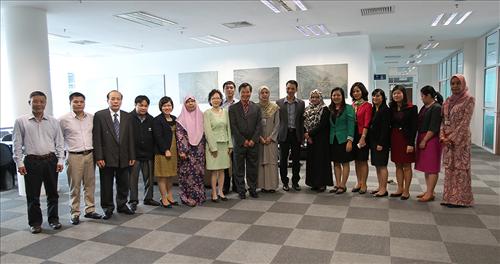Building and developing universities in the direction of research has become a trend of universities in the world today. Although this policy has only been officially implemented for the past 10 years, the two universities above have achieved successes that are worth learning and admiring.


Colleagues at the University of Malaya shared in detail the process of changing awareness and action towards the policy of building the school into a research university. The main reason for the school's success is the design of appropriate, meticulous, elaborate processes and plans for each individual and the determination to overcome many difficulties. The most typical of which is the construction of standards for evaluating the capacity to complete tasks of staff and lecturers (KPI - Key Performance Indicator). Every year, the school has regulations on KPI for each staff, lecturer, and researcher. For lecturers, KPI includes about 80% of indicators related to professional work, 15% related to personal attitude and character, 5% related to contributions to the academic community, and activities other than teaching. Based on that, staff, depending on their seniority and position, know clearly what they have to do and leaders can also conveniently check and evaluate. The implementation of the research university model was tested in the first 3 years, then adjusted and applied continuously. To promote early ranking increase, the school invited many famous foreign professors and experts to work and cooperate. At the same time, the school always researches and grasps the evaluation methods and trends of other universities in the world to adjust the training majors to promote its reputation in the international arena. The 5 factors that contributed to the success of the University of Malaya are summarized as the majority of the school's staff must have a passion for science, the determination of the leadership, abundant financial resources, a qualified team and appropriate policies.
Nanyang Technological University (NTU) of Singapore is the second institution that the delegation visited, which has also developed and implemented many major policies to transform from a school focusing on teaching and training into a research university since 2006. To improve the quality of its staff, NTU applies the American Competency Management System (PMS), according to which lecturers recruited after 6 years must strive to become associate professors, and after 9 years to become professors. Anyone who fails to meet that requirement will be fired. However, the school also provides maximum support to staff and lecturers so that they can complete their research tasks well, such as introducing specialized journals, editing and translating articles into English, etc. Particularly in the field of social sciences and humanities, in addition to articles in specialized journals, NTU also considers publications such as chapters and sections in a book published by reputable foreign publishers. The biggest challenge for staff at the Rajaratnam School of International Studies (RSIS), a member school of NTU, is balancing time and resources to simultaneously implement research projects of the government, funding agencies and individuals. Another challenge they face is the occasional difference between personal scientific views and state policies. In addition, scholars at RSIS have to work in a highly international and competitive environment, with more than 60% of staff being foreigners, many of whom are experts from developed countries.
From the experiences of the University of Malaya and the Nanyang Technological University, the staff of the USSH delegation had a better understanding of the opportunities and challenges of developing the school into a research university. Many ideas were formed from this very effective and meaningful working trip, signaling positive changes in the implementation of the school's development plan towards research in the future. It is important to proactively exchange, learn, expand the network of connections and embark on specific scientific cooperation.
Author:Dr. Nguyen Thi Thanh Huyen
Newer news
Older news